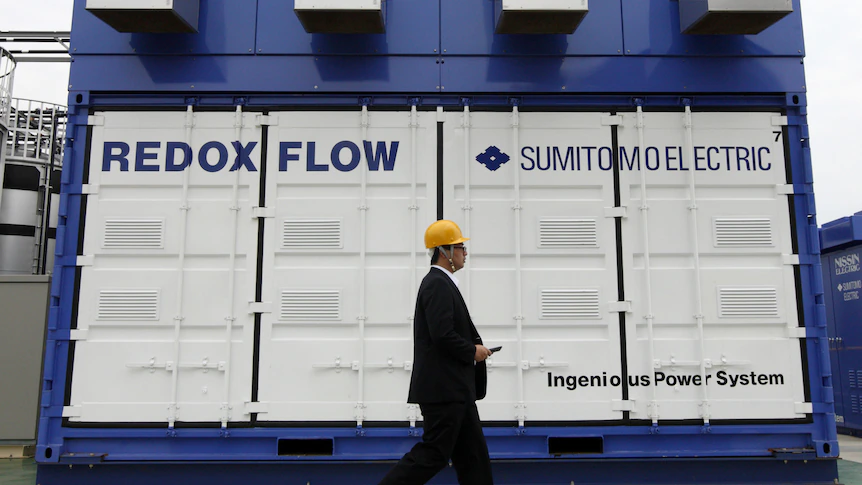From ABC News: Vanadium redox flow batteries can provide cheap, large-scale grid energy storage. Here’s how they work – ABC News
The rise of renewable energy has exposed a new problem: energy storage.
Solar and wind can generate very cheap electricity, but they’re intermittent. For entire grids to run on renewables, enormous amounts of storage are needed to avoid blackouts. The two main options, pumped hydro and lithium-ion batteries, each have their drawbacks, such as high costs.
Fortunately, there may be a third option.
A type of battery invented by an Australian professor in the 1980s has been growing in prominence, and is now being touted as part of the solution to this storage problem. Called a vanadium redox flow battery (VRFB), it’s cheaper, safer and longer-lasting than lithium-ion cells. Here’s why they may be a big part of the future — and why you may never see one.

Vanadium flow batteries, like this one by Japanese company Sumitomo, are generally very, very big.(Supplied: Sumimoto)
